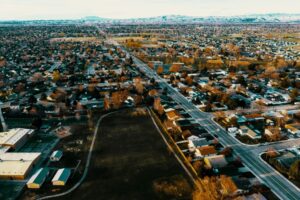Top 10 Coldest Cities in the U.S. by Temperature
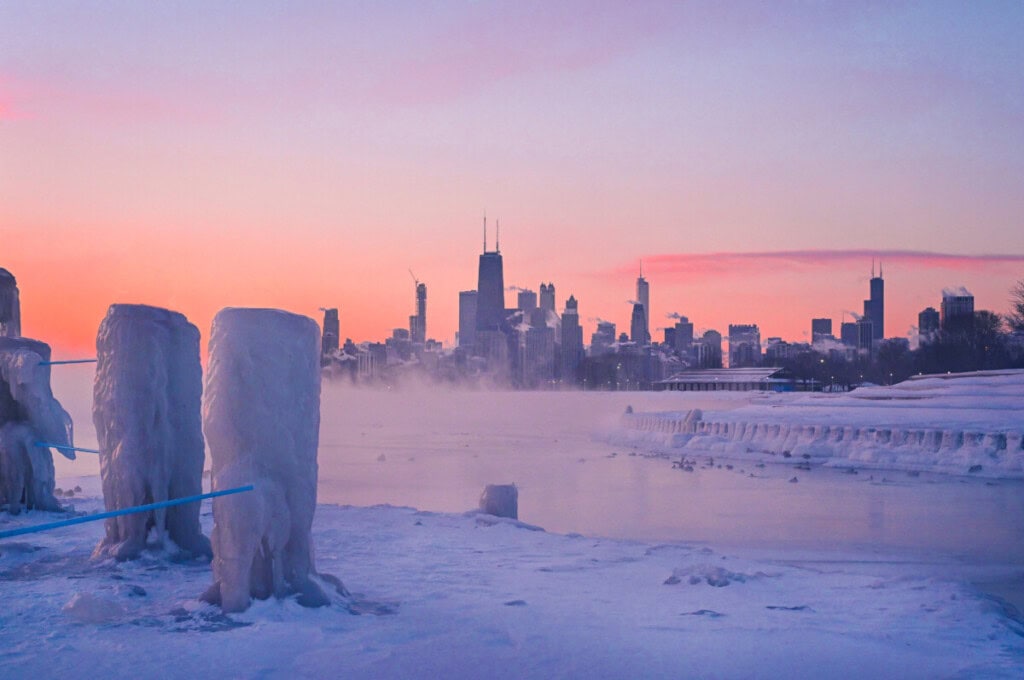
Seasonal climate is often a big factor for people when they’re planning to move – some like it warm and sunny, others like it cold and cloudy. To help you make an informed decision, we’ve put together a list of the 10 coldest cities in the U.S. so you can move with confidence. The post Top 10 Coldest Cities in the U.S. by Temperature appeared first on Redfin | Real Estate Tips for Home Buying, Selling & More.
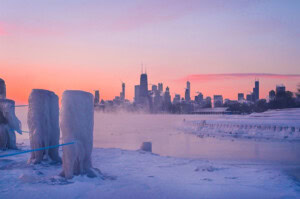
Cold weather can be a cozy change of pace from increasingly hot summers, and is often welcomed when it returns every year. People especially look forward to peaceful, snowy winters in northern states, where winter wonderlands are the norm.
Unfortunately, cold weather is becoming rarer. The ten warmest years on record have all occurred during the last decade, and winter is the fastest-warming season, becoming more pronounced the further north you go. If you’re a house hunter looking to buy or a seller looking to relocate, these are important factors to consider.
So, on the heels of a cold winter, where can you still find cold temperatures? And what are the coldest cities in the country? Redfin has compiled a list of the coldest cities in the U.S. to help. Read on to discover if one of them is right for you.
How we measure the coldest cities
For our purposes of determining the “coldest” cities, this list will focus on cities that have the lowest average annual temperature. This way, we can determine the coolest cities year-round. We will also include a city’s average winter temperature, but won’t use it for ranking purposes.
Keep reading to see Redfin’s rankings of the coldest cities in the U.S. with a population of 20,000 or more.
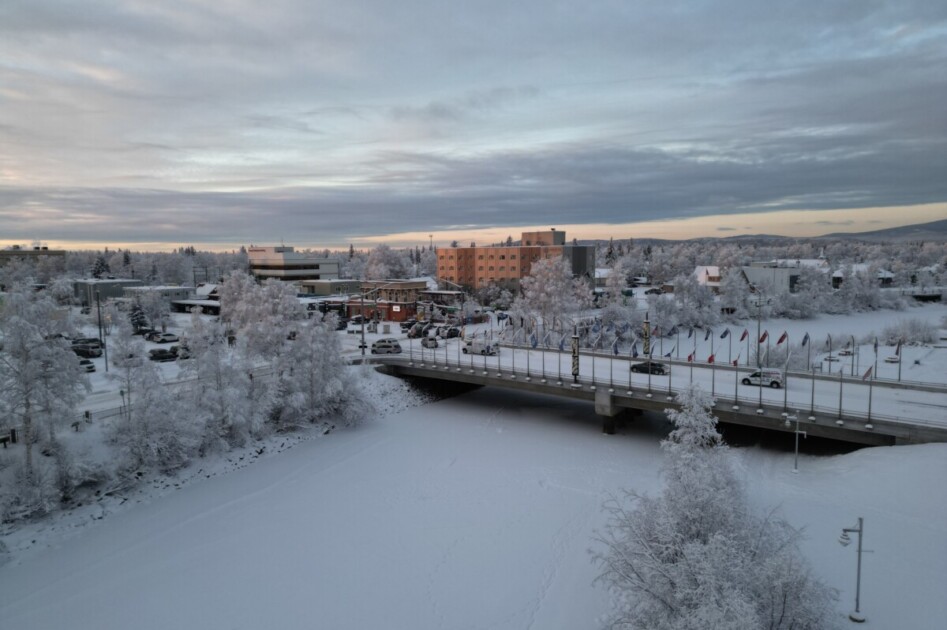
What are the coldest cities in the U.S.?
- Fairbanks, AK
- Anchorage, AK
- Grand Forks, ND
- Butte, MT
- Marquette, MI
- Duluth, MN
- Williston, ND
- Dickinson, ND
- Juneau, AK
- Moorhead, MN
1. Fairbanks, Alaska
- Average annual temperature: 28.3°F
- Average winter temperature: -4.1°F
- Record lowest temperature: –66°F (1934)
Fairbanks is truly a frigid city, owed largely to its dark, bitterly cold winters. And they’re proud of it. They don’t close schools for cold weather, recess is only canceled when temperatures reach -20°F, and University of Alaska, Fairbanks students have a tradition of posing for photos in swimsuits when temperatures reach -40°F. Typical winter low temperatures are a bitter -13.8°F.
Fairbanks is famously cold, not just because of its far-northern location, but also its geography. Tucked in the flat, landlocked Tanana Valley, it’s bordered by the Arctic National Wildlife Refuge to the north and the glacier-capped Alaskan Rockies to the south. This setup traps cold Arctic air, causing deep freezes and long cold snaps.
Because of its inland location and relatively dry air, Fairbanks also sees much larger seasonal temperature swings than other Alaskan cities, like Anchorage. Summer highs average a pleasant 70.3 in Fairbanks, while they average just 64.5 in Anchorage. 24/7 summer sunlight doesn’t hurt, either.
Fairbanks homes for sale | Fairbanks houses for rent | Fairbanks apartments for rent
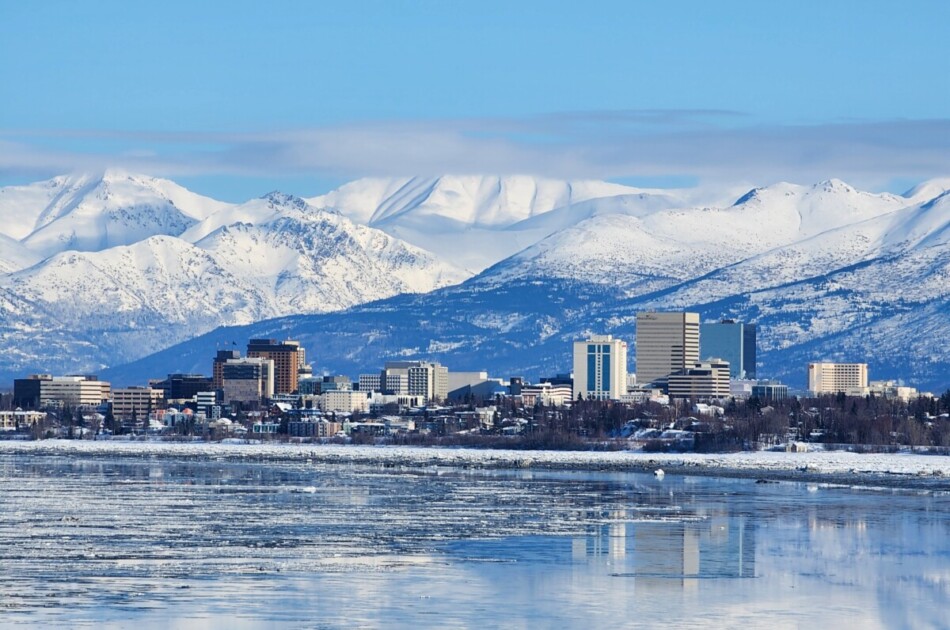
2. Anchorage, Alaska
- Average annual temperature: 37.6°F
- Average winter temperature: 19.2°F
- Record lowest temperature: -38°F (1947)
Anchorage is the second-coldest city in the United States. The city owes its cold temperatures primarily to its far northern location, instead of frigid Arctic blasts of air. This is because it’s located near the ocean and surrounded by mountains, which helps keep temperatures from getting excessively hot or cold. Anchorage is also the cloudiest city in the U.S.
Compared to other Alaskan towns, Anchorage is actually fairly mild. The cold Gulf of Alaska provides a moderating influence year-round, while the massive Chugach Mountains and Alaskan Rockies help keep the worst of the weather away.
Extreme cold can happen, though. The most intense cold snap occurred in 1946-47, when the city recorded 12 straight days of low temperatures -30°F or lower. The typical winter low temperature in Anchorage is 13.3°F.
Anchorage homes for sale | Anchorage houses for rent | Anchorage apartments for rent
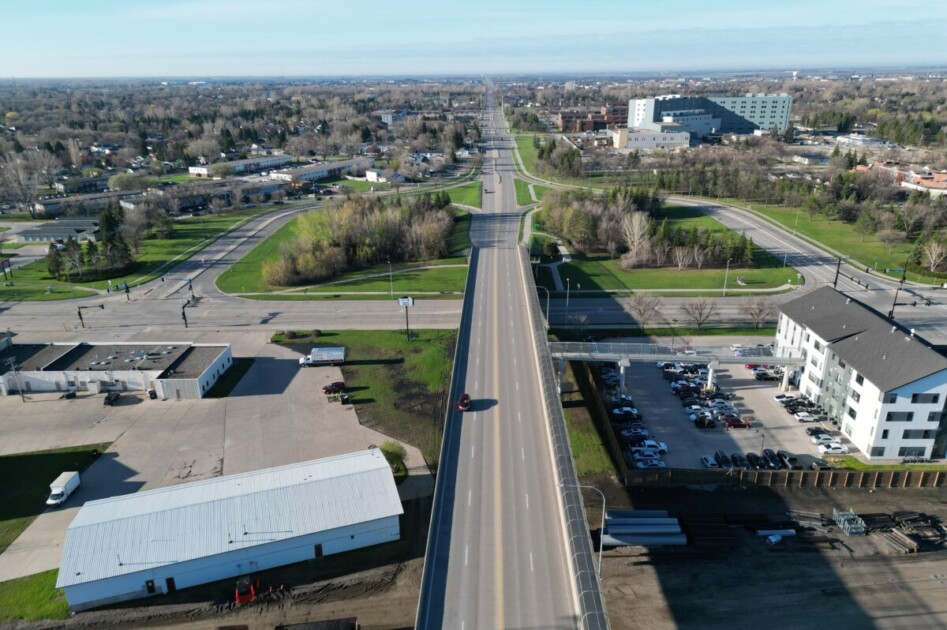
3. Grand Forks, North Dakota
- Average annual temperature: 39.8°F
- Average winter temperature: 9.9°F
- Record lowest temperature: -43°F (1912/2004)
Grand Forks, ND is the coldest city in the contiguous United States. The city gets so cold primarily because of its far-northern latitude, flat, landlocked topography, and exposure to Arctic air masses.
The city is especially cold because of winter temperatures. Unlike coastal cities that benefit from the moderating effects of large bodies of water, Grand Forks gets the full brunt of frigid air descending from Canada’s interior. The flat landscape allows these cold air masses to sweep across the plains unimpeded, leading to extremely cold temperatures.
The air is generally fairly dry, though, and summers can be quite warm; heat waves flow through just as easily as cold fronts. In fact, the difference between the highest and lowest temperatures ever recorded in Grand Forks is a remarkable 152°F.
Grand Forks homes for sale | Grand Forks houses for rent | Grand Forks apartments for rent
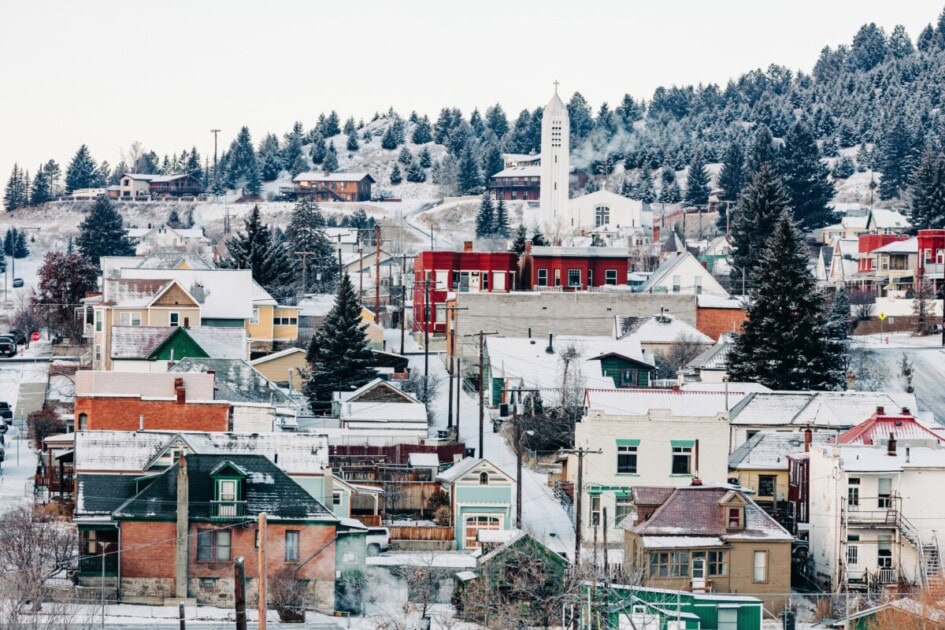
4. Butte, Montana
- Average annual temperature: 40.1°F
- Average winter temperature: 20.4°F
- Record lowest temperature: -52°F (1983)
Butte is unique on this list because it’s a mountain town over a mile above sea level, in the heart of the Northern Rockies. As such, elevation plays a big role in the city’s climate. The mountains act as a barrier from the brunt of many cold fronts and heat waves, providing a moderating influence similar to a city on the coast.
In short, Butte is consistently cool and often cold year-round, leading to a very low average annual temperature. For example, the city’s average winter temperature is just over 20°F, but it sees 197 days with low temperatures below freezing.
Butte may be a bit warmer than records suggest, though. Official temperature readings are taken at the Butte Mooney Airport, two miles to the southeast, which is generally colder than in town.
Butte homes for sale | Butte houses for rent | Butte apartments for rent
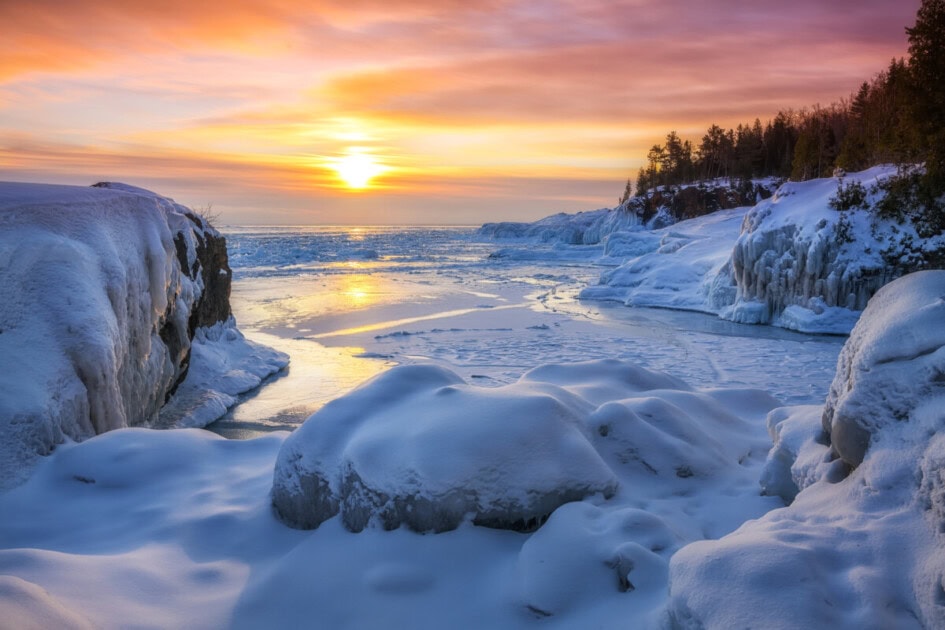
5. Marquette, Michigan
- Average annual temperature: 40.4°F
- Average winter temperature: 16.8°F
- Record lowest temperature: -33°F (1861)
Marquette, an upper peninsula city famous for its snowy winters, lakeside recreation, and industrial past, is a very cold city. Set on the shores of Lake Superior, Marquette sees a fairly similar climate to nearby Duluth, MN, with frigid, snowy winters and very mild summers.
The massive lake helps moderate temperatures, keeping them around 3-4°F warmer in the winter than places further inland. But it also produces huge amounts of lake effect snow when Arctic cold fronts pass over the milder lake water. This heavy snow cover can push temperatures lower.
Despite the cold and snow, people adore the quaint Michigan city. Snowy winter festivals, cozy cabins, and quiet walks in the hilly woods are all popular in and around the area. Ski mountains are even located just five minutes from downtown.
Marquette homes for sale | Marquette houses for rent | Marquette apartments for rent
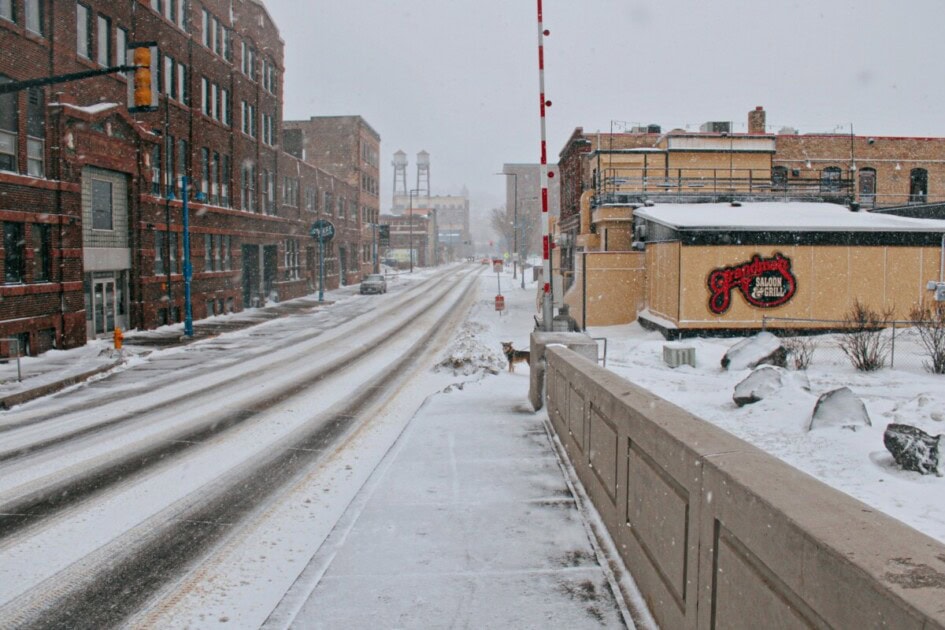
6. Duluth, Minnesota
- Average annual temperature: 40.6°F
- Average winter temperature: 14.6°F
- Record lowest temperature: -41°F (1885)
Duluth is the sixth-coldest city in the U.S. The city sees low temperatures below freezing for over half of the year.
Duluth is cold year-round because of its northern location and its proximity to Lake Superior. During the summer, the lake essentially acts like a heat sink, keeping the region much cooler than nearby cities like Minneapolis. And during the winter, Lake Superior often partially freezes over, causing additional cooling. The region also receives freezing Arctic air from Canada every year, which is when the extreme cold occurs.
Duluth sees an abundance of lake-effect snow, too, making it one of the snowiest cities in the U.S.
Duluth homes for sale | Duluth houses for rent | Duluth apartments for rent
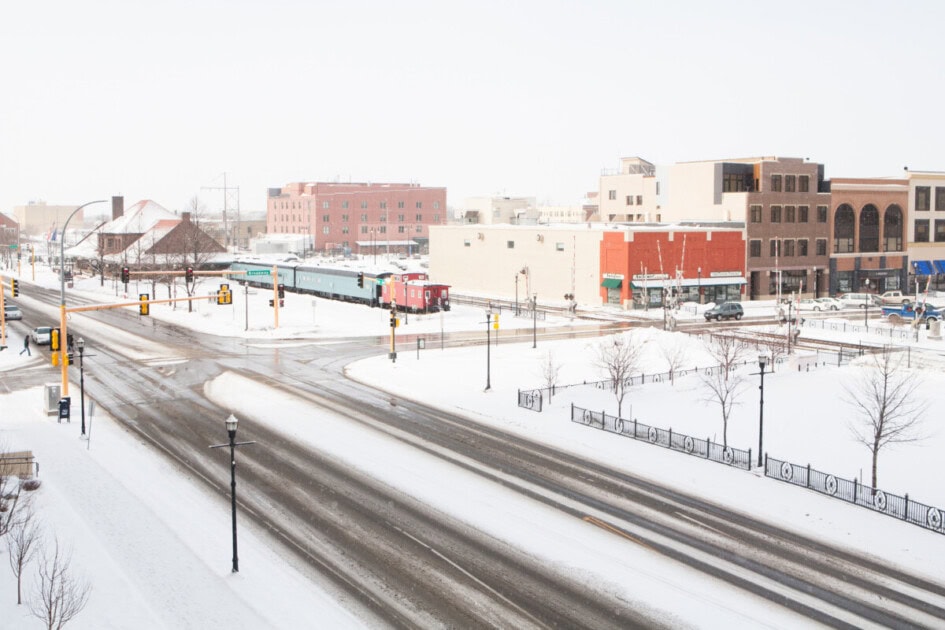
7. Williston, North Dakota
- Average annual temperature: 41.7°F
- Average winter temperature: 14.6°F
- Record lowest temperature: -50°F (1936)
Williston, ND is the seventh-coldest city in the U.S. Similar to Grand Forks, Williston is so cold because of its brutal winters caused by Arctic cold fronts. Freezing temperatures are made possible by a flat landscape and no large bodies of water.
Wind chill is an especially important factor in the winter. Essentially, wind chill is how cold the air actually feels when factoring in wind speeds – similar to how the heat index measures how hot the air actually feels when accounting for humidity.
Williston, like most cities on the Great Plains, is fairly windy year-round, especially when storms pass over. This can produce dangerously low wind chill values in the winter, on top of already bitterly cold temperatures. Last year, an Arctic blast hit North Dakota and produced record-low wind chill values of -62°F in Williston, cold enough to get frostbite in five minutes.
Williston homes for sale | Williston houses for rent | Williston apartments for rent
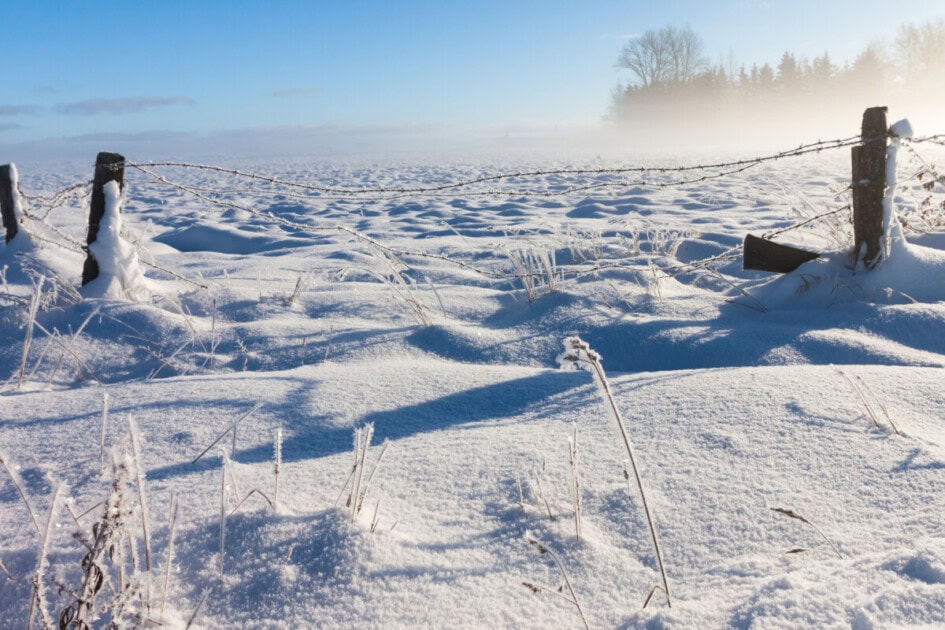
8. Dickinson, North Dakota
- Average annual temperature: 42.0°F
- Average winter temperature: 17.2°F
- Record lowest temperature: -47°F (1936)
Dickinson, next door to Theodore Roosevelt National Park and home to a world-class dinosaur museum, is a very cold city. Dickinson is so cold for the same reasons that Williston and Grand Forks are so cold: Flat prairies, a landlocked northern location, and consistent wind, all leading to frequent blasts of Arctic air that drop temperatures to dangerously low values.
Dickinson’s topography and climate are nearly identical to Williston – it’s just two hours southeast, after all. Prairies, badlands, and buttes define the landscape. A record-low wind chill value of -70°F was measured during an Arctic blast in early 2024, similar to values in Williston and Bismarck.
Dickinson homes for sale | Dickinson houses for rent | Dickinson apartments for rent
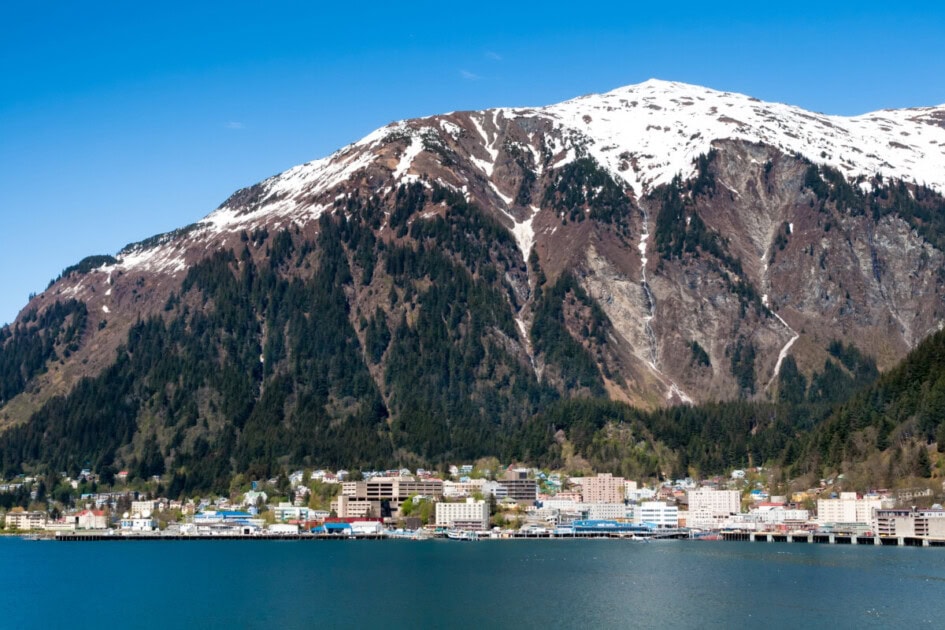
9. Juneau, Alaska
- Average annual temperature: 42.1°F
- Average winter temperature: 29.6°F
- Record lowest temperature: -22°F (1968/1972)
Alaska’s capital city, Juneau, is located in the damp, mountainous Panhandle region of the state, most of which is covered by temperate rainforest. Awe-inspiring landscapes dominate the landscape, like glacier-filled mountains, salmon-rich rivers, and deep blue waters.
Juneau takes temperature consistency to a whole new level. The cold, northern Gulf of Alaska moderates temperatures and provides plenty of moisture, keeping summers very cool and winters cold but not bitterly so. Juneau’s warmest and driest month, July, has an average high of just 64°F, while winters average around 30°F.
Juneau is also very wet year-round, seeing up to 90 inches of precipitation every year. In the winter, most of the precipitation falls as snow. Unfortunately, due to very warm temperatures, the 2024-25 winter saw far-below normal snowfall. This came on the heels of the winter of 2023-24, which was Juneau’s snowiest in over a decade.
Juneau homes for sale | Juneau houses for rent | Juneau apartments for rent
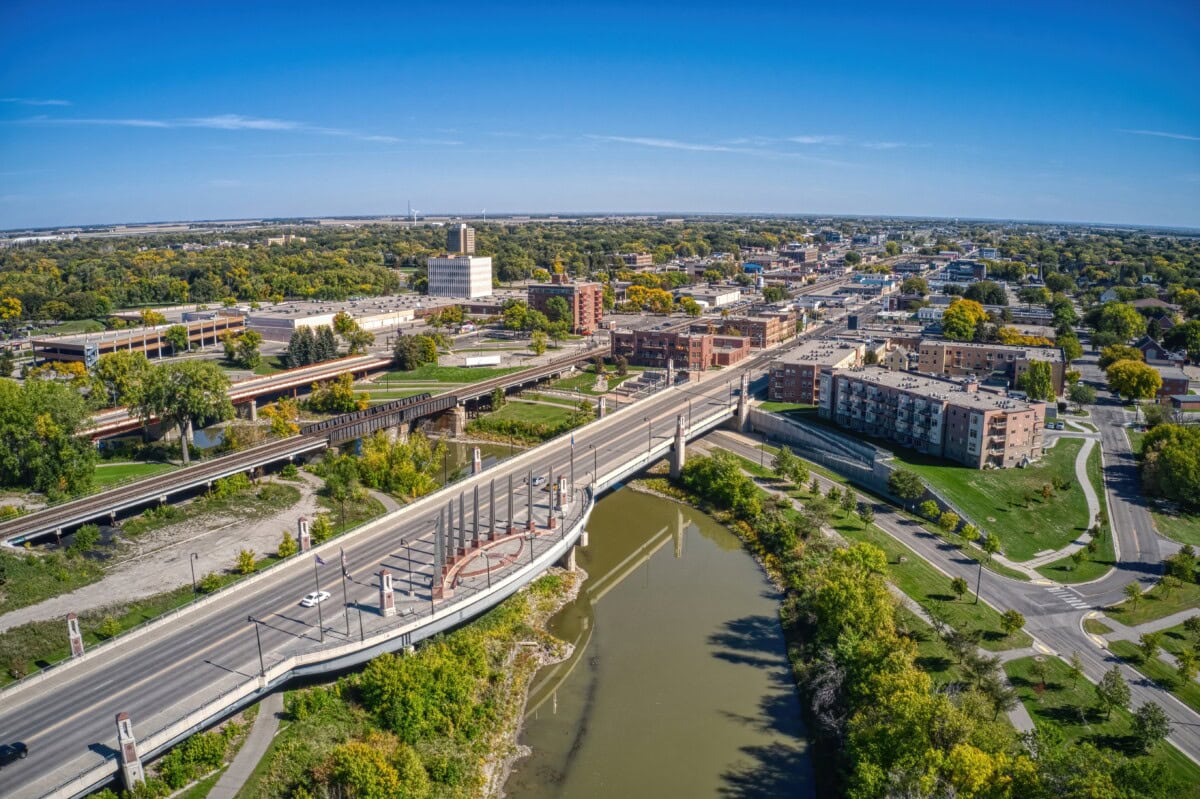
10. Moorhead, Minnesota
- Average annual temperature: 42.2°F
- Average winter temperature: 12.4°F
- Record lowest temperature: -48°F (1887)
Moorhead, Fargo’s Midwestern neighbor, is the tenth-coldest city in the U.S. The city is so cold because it sits in the flat Great Plains, specifically the fertile Red River Valley. This means there’s nothing to block the cold Arctic air that regularly pushes in from Canada during the winter. And without mountains or bodies of water to regulate temperatures, they can dip dangerously low. Summers can get hot for similar reasons, when warm air floods in from the south.
Interestingly, most temperature readings are included as part of Fargo, since they’re located just across state lines. Moorhead has a slightly lower official average winter temperature (0.4°F colder), though, so it just barely beats out its counterpart to make the list.
Moorhead homes for sale | Moorhead houses for rent | Moorhead apartments for rent
What is the coldest place in the U.S.?
The outright coldest inhabited place in the U.S. is Utqiagvik (formerly Point Barrow) on the northern tip of Alaska. The average annual temperature is just 12.7°F, and in the winter, temperatures average 11 degrees below zero (-24°C). The lowest temperature on record for Utqiagvik is -56°F.
Utqiagvik experiences polar nights for over 60 days during the winter, meaning the sun never rises. Surprisingly, over 4,000 people live in the town year-round, and evidence suggests that the Iñupiat peoples have called the area home for at least 1,500 years (likely far longer). If you want to move here, you’ll find it fairly difficult, though, as the only way to reach the town is by plane or boat.
How are temperatures changing?
Temperatures around the world are rising rapidly, especially in the far north and south. This unprecedented warming is intensifying climate change and already causing dramatic socioeconomic impacts, such as strained water supplies, food insecurity, and more.
As temperatures rise, research shows that the coldest cities in the U.S. will get warmer. Record low temperatures will become less common, while record high temperatures will become more normal. This is already happening, too; seven out of ten cities on this list had a lower average temperature just 10 years ago (comparing 30-year normals from 1980-2010 to 1990-2020).
The 2023-2024 winter was also the warmest on record in the contiguous U.S., with many calling it “The Lost Winter.” 2024-25 was much colder, but still ranked above average for the season.
Methodology
This list contains average annual temperature data for metropolitan areas with over 20,000 residents. Cold cities are generally less populated, so we lowered our population threshold to gather a more complete dataset.
Data comes from the National Centers for Environmental Information (NCEI) and its parent administration, the National Oceanic and Atmospheric Administration (NOAA). Average annual temperatures are a twelve-month average based on data from 1991-2020. Average winter temperatures are a three-month average based on data from December-February 1991-2020.
An average annual temperature combines a city’s average daily high and low temperatures from January-December. An average winter temperature combines a city’s average daily high and low temperatures from December-February.
The post Top 10 Coldest Cities in the U.S. by Temperature appeared first on Redfin | Real Estate Tips for Home Buying, Selling & More.




